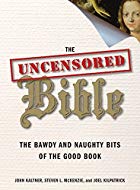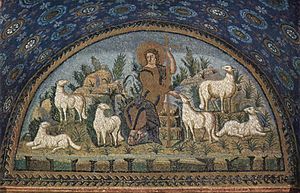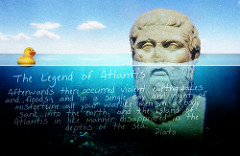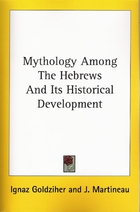They’re coming thick and fast now. Having just been hit with the discovery of Jesus’ house in Nazareth, or maybe his neighbour’s, we now have another Israeli archaeologist telling the media that a text on a pottery shard dated — and located — in King David’s jurisdiction, testifies to a Bible-like text that is unique to the prophetic and compassionate culture of ancient Israel. (Thanks to Sabio Lantz for alerting me to this piece of news.)
The claims come from Prof. Gershon Galil of the University of Haifa. He is not an archaeologist, but an historian and interpreter of archaeological finds. This is interesting because one of the loudest complaints against so-called “minimalists” like Philip Davies, Niels Peter Lemche and Thomas L. Thompson is that they are not archaeologists, but historians who interpret the archaeological reports. But moving on, and not to get sidetracked with inconsistencies like this, here is Professor Galil’s claims as reported in what appears to be a University of Haifa press release.
“This text is a social statement, relating to slaves, widows and orphans. It uses verbs that were characteristic of Hebrew, such as asah (“did”) and avad (“worked”), which were rarely used in other regional languages. Particular words that appear in the text, such as almanah (“widow”) are specific to Hebrew and are written differently in other local languages. The content itself was also unfamiliar to all the cultures in the region besides the Hebrew society: The present inscription provides social elements similar to those found in the biblical prophecies and very different from prophecies written by other cultures postulating glorification of the gods and taking care of their physical needs,” Prof. Galil explains. . . . .
He adds that the complexity of the text discovered in Khirbet Qeiyafa, along with the impressive fortifications revealed at the site, refute the claims denying the existence of the Kingdom of Israel at that time.
Impressive fortifications refuting the claims denying the Kingdom of Israel?
A few months ago I discussed what the evidence of the fortifications found in Judea around this period. It is surely fanciful to link them with a centralized kingdom of Israel!
The University of Haifa press release continues:
The contents of the text express social sensitivity to the fragile position of weaker members of society. The inscription testifies to the presence of strangers within the Israeli society as far back as this ancient period, and calls to provide support for these strangers. It appeals to care for the widows and orphans and that the king – who at that time had the responsibility of curbing social inequality – be involved. This inscription is similar in its content to biblical scriptures (Isaiah 1:17, Psalms 72:3, Exodus 23:3, and others), but it is clear that it is not copied from any biblical text.
John Loftus on Debunking Christianity has already published a fine piece raising awareness of translation and dating controversies.
I repeat here the translation comparisons, and then cite a few ancient nonbiblical texts that ought to give pause to anyone taking Galil’s claims of the uniqueness of the society of ancient Judah.
The University of Haifa translation:
1′ you shall not do [it], but worship the [Lord].
2′ Judge the sla[ve] and the wid[ow] / Judge the orph[an]
3′ [and] the stranger. [Pl]ead for the infant / plead for the po[or and]
4′ the widow. Rehabilitate [the poor] at the hands of the king.
5′ Protect the po[or and] the slave / [supp]ort the stranger.
Compare a translation by John Hobbins, “based on the judgments of Misgav, Yardeni, Ahituv, and Schniedewind”:
1 Do not do [anything bad?], and serve [personal name?]
2 ruler of [geographical name?] . . . ruler . . .
3 [geographical names?] . . .
4 [unclear] and wreak judgment on YSD king of Gath . . .
5 seren of G[aza? . . .] [unclear] . . .
The reader might be forgiven for questioning the certainty of either translation.
But assume the former is the truer. Here is a small sampling of similar Middle Eastern texts, from an appendix in The Messiah Myth (2005) by Thomas L. Thompson. To assign a uniqueness to Israel’s culture on the basis of a few lines of this sort of poetry is patriotic arrogance in the extreme.
Akkadian Counsels of Wisdom (Messiah Myth, p. 328)
To your opponent, do no evil. Recompense your evildoer with good. To your enemy, let justice [be done] . . . . Give food to eat; give date wine to drink; honor, clothe the one begging for alms. Over this, his god rejoices This is pleasing to the god Shamash; he rewards it with good. Be helpful. A maid in the house, do not . . .
Hittite Hymn to Telepinus (Messiah Myth, p. 328)
Whatever you say, O Telepinus, the gods bow down to you. Of the oppressed, the orphan and the widow you are father and mother; the cause of the orphan and the oppressed you, Telepinus, take to heart.
Compare Psalm 65:5
A father to the fatherless, a defender of widows, is God in his holy habitation.
Middle Assyrian Hymn to Marduk (Messiah Myth, p. 329)
Each day you give justice to the oppressed and abused; you administer the destitute, the widow, the wretched and the anxious . . .
I think there is much more public familiarity with the similar texts from Egypt which I won’t repeat here.
There is hardly anything remarkable or unique about the content of the text.
What might be a bit unusual is that the content is not about trade administrivia, nor, apparently, is it a few lines of praise for a deity. Or maybe it is a few lines about a deity. Or maybe . . . . Let’s wait and see.
Like this:
Like Loading...



 I picked up
I picked up 



